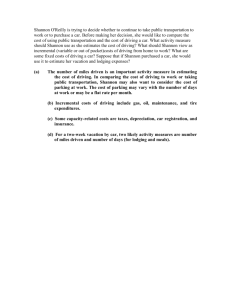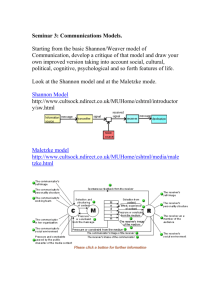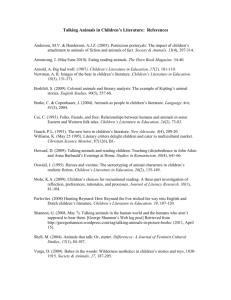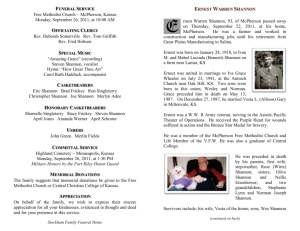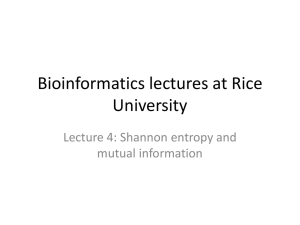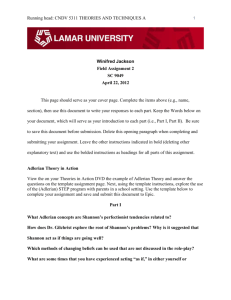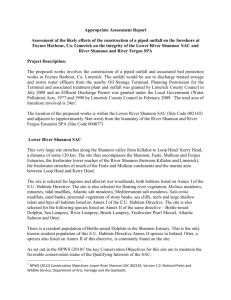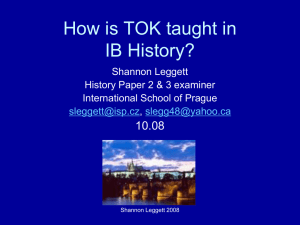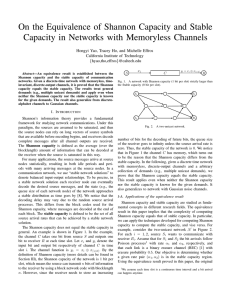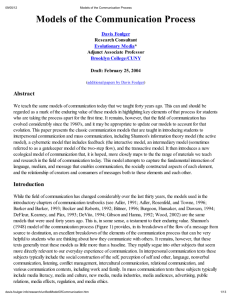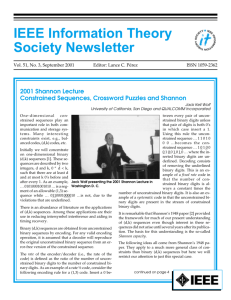Natural Information - The George Washington University
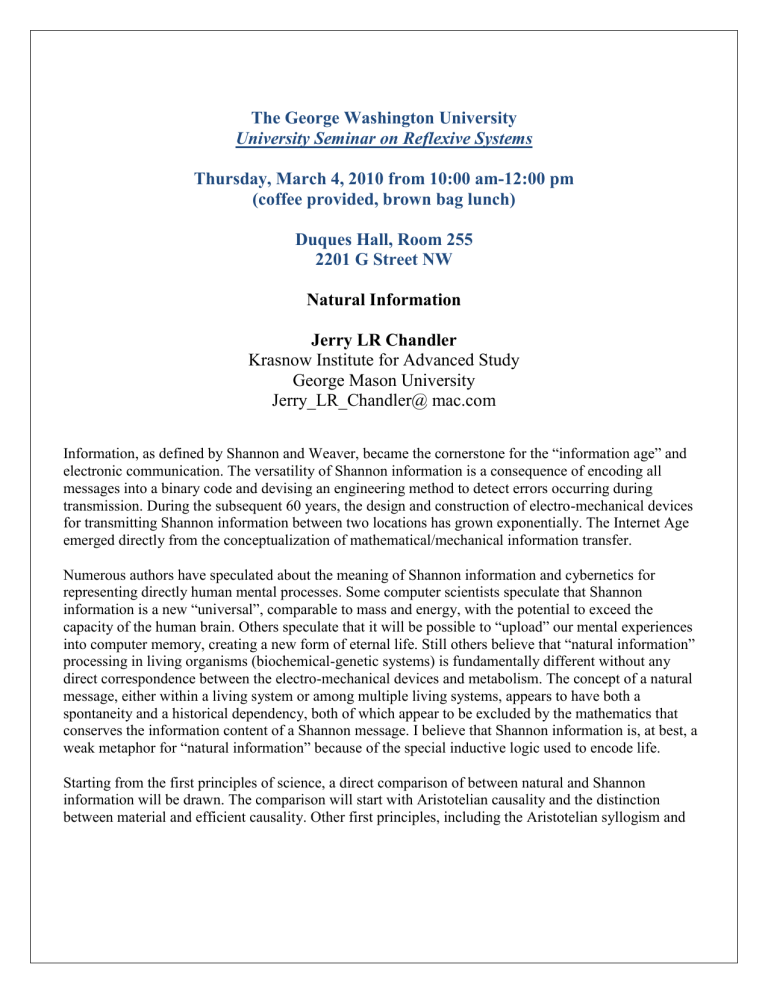
The George Washington University
University Seminar on Reflexive Systems
Thursday, March 4, 2010 from 10:00 am-12:00 pm
(coffee provided, brown bag lunch)
Duques Hall, Room 255
2201 G Street NW
Natural Information
Jerry LR Chandler
Krasnow Institute for Advanced Study
George Mason University
Jerry_LR_Chandler@ mac.com
Information
, as defined by Shannon and Weaver, became the cornerstone for the “information age” and electronic communication. The versatility of Shannon information is a consequence of encoding all messages into a binary code and devising an engineering method to detect errors occurring during transmission. During the subsequent 60 years, the design and construction of electro-mechanical devices for transmitting Shannon information between two locations has grown exponentially. The Internet Age emerged directly from the conceptualization of mathematical/mechanical information transfer.
Numerous authors have speculated about the meaning of Shannon information and cybernetics for representing directly human mental processes. Some computer scientists speculate that Shannon information is a new “universal”, comparable to mass and energy, with the potential to exceed the capacity of the human brain. Others speculate that it will be possible to “upload” our mental experiences into computer memory, creating a new form of eternal life. Still others believe that “natural information” processing in living organisms (biochemical-genetic systems) is fundamentally different without any direct correspondence between the electro-mechanical devices and metabolism. The concept of a natural message, either within a living system or among multiple living systems, appears to have both a spontaneity and a historical dependency, both of which appear to be excluded by the mathematics that conserves the information content of a Shannon message. I believe that Shannon information is, at best, a weak metaphor for “natural information” because of the special inductive logic used to encode life.
Starting from the first principles of science, a direct comparison of between natural and Shannon information will be drawn. The comparison will start with Aristotelian causality and the distinction between material and efficient causality. Other first principles, including the Aristotelian syllogism and
categories will be used to demonstrate clearly and distinctly between the mathematics used by the two formal logics of natural and artificial communication.
Finally, three classical physical chemical equations will be used to demonstrate the relationships between the complex mathematics of Shannon information and the perplex mathematics of natural information.
These equations are termed the ‘Rosetta equations’ as they transliterate between the two symbol systems of formal logic, similar to the role of the Rosetta stone in transliterating between ancient and modern symbolic communications.
In summary, artificial and natural information are closely related concepts but the former is based on the regularity of traditional mathematics while the latter is based on the irregular mathematics of life.
Jerry LR Chandler received his Ph. D. in Biochemistry. After three years of post-doctoral study in
Genetics in Freiburg, Germany, he joined the US Public Health Service. He contributed to public health research in pharmacology, toxicology, genetics, epidemiology, occupational health policy and scientific computer systems design. In 1996, he joined the Krasnow Institute for Advanced Study of George Mason
University. He served for three years on the National Academy of Sciences Committee for the Destruction of Chemical Weapons. In 2001, he became a Visiting Professor at the International Institute for Advanced
Studies (IIAS) in Baden-Baden, Germany. The US Public Health Service, the IIAS and the CASYS organization of Liege, Belgium awarded special recognitions to his scientific accomplishments. He serves on the editorial board of the Italian journal, Metalogicon, He was co-founder of the Washington
Evolutionary Systems Society in 1983 and continues to serve WESS in a leadership role. He serves as a member of the Board of the Foundation for Information Sciences. For the past ten years, a focus of his research was the ontological conceptualization of relationships among the disciplines.

